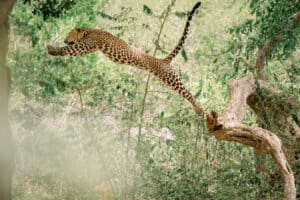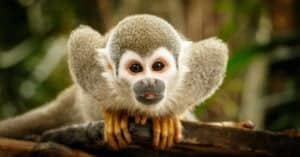The golden marmoset, commonly known as the Golden Lion Tamarin, is a little New World monkey. It is indigenous to Brazil’s woodlands along the Atlantic coast. The golden lion tamarin, sometimes referred to as the golden marmoset and scientifically named Leontopithecus rosalia, is a small New World monkey belonging to the Callitrichidae family. Its Portuguese name is Mico-Leo-Dourado (miku lew dowadu, [liw doadu]).
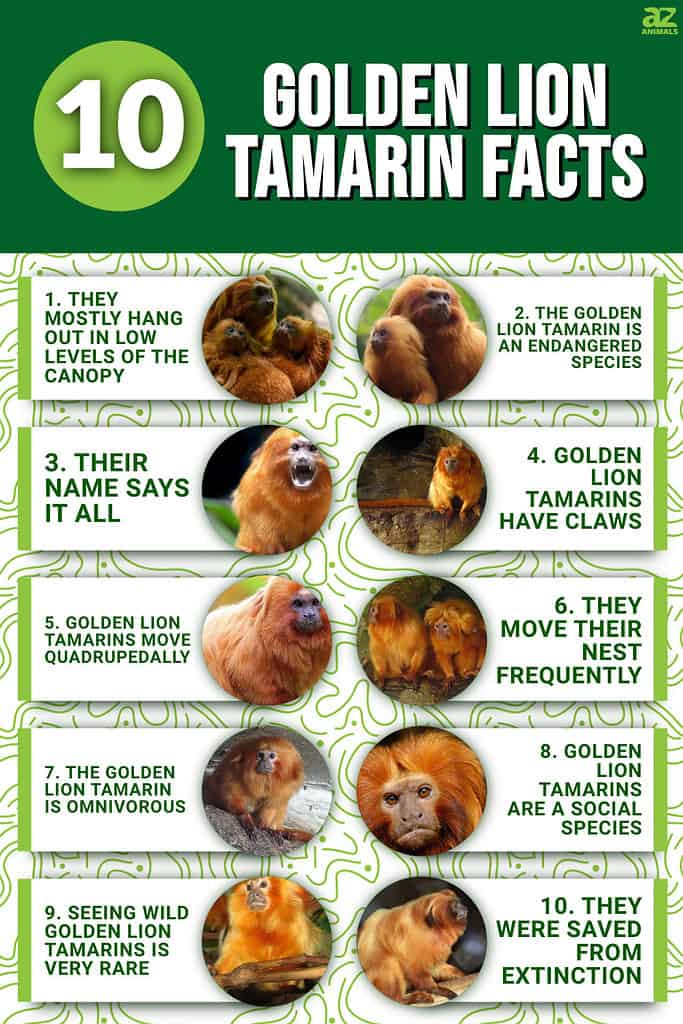
The golden lion tamarin, a native of Brazil’s Atlantic coastal woodlands, is a threatened species. The wild population is distributed over four locations in southeast Brazil, and according to a recent census, there are just 3,200 individuals left in the wild. Of the captive population, 150 zoos are home to roughly 490 of these animals. Continue reading for 10 incredible Golden Lion Tamarin facts.
1. They Mostly Hang Out in Low Levels of the Canopy
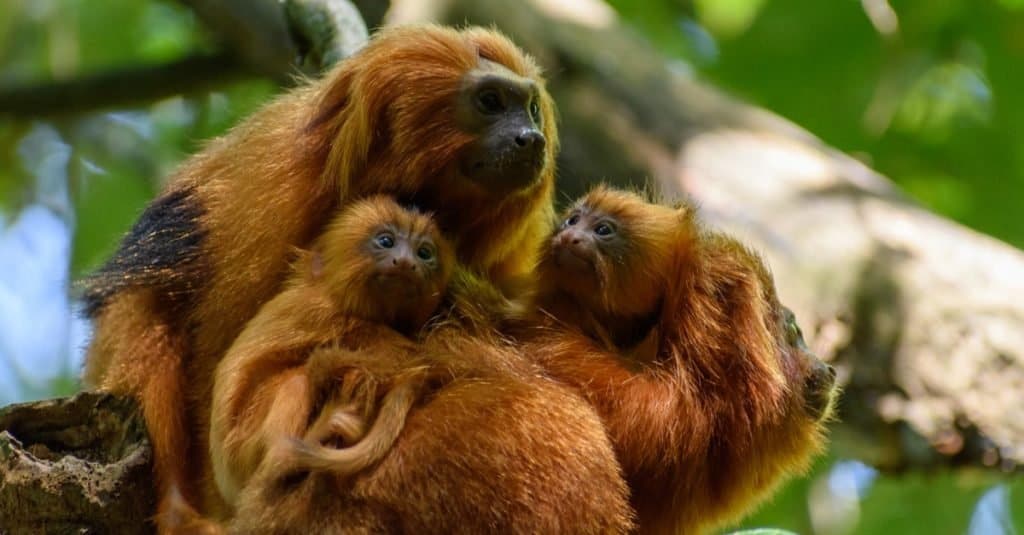
Golden lion tamarins are indigenous to Brazil’s woodlands along the Atlantic coast.
©Lucas.Barros/Shutterstock.com
Golden lion tamarins live in a thick forest covered with several vines and a lot of fruit. It is indigenous to Brazil’s woodlands along the Atlantic coast. They reside in the closed canopy, frequently remaining 10 to 30 meters (33 to 100 feet) above the ground.
2. The Golden Lion Tamarin is an Endangered Species
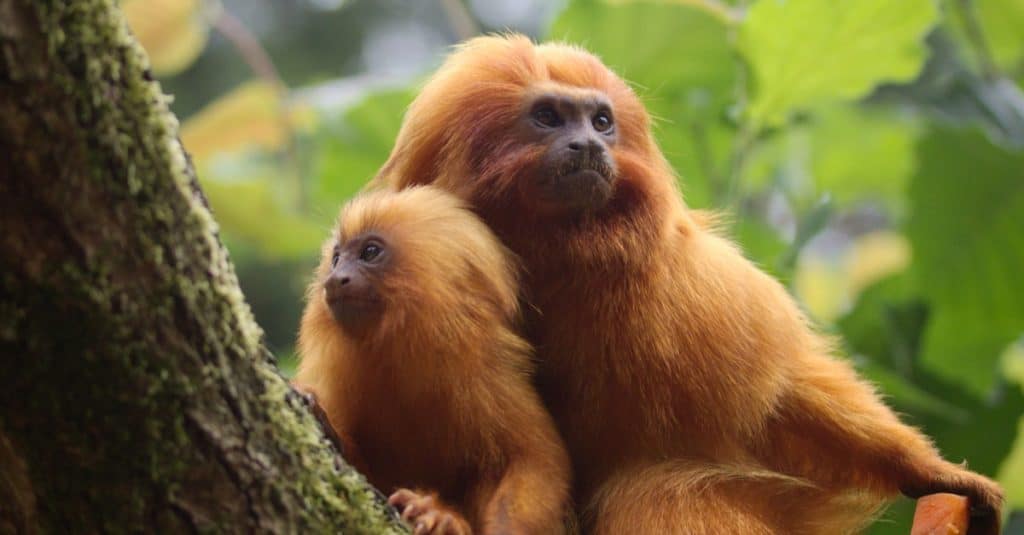
There are just 3,200 golden lion tamarins left in the wild.
©Alex_Zet/Shutterstock.com
According to a recent census, there are believed to be 3,200 wild individuals left in Brazil’s southeast. Of the captive population spread out throughout 150 zoos, 490 are still alive.
3. Their Name Says It All

The golden lion tamarin is sometimes referred to as the golden
marmoset
and scientifically named Leontopithecus rosalia.
©zedithphotography/Shutterstock.com
The moniker “golden lion tamarin” refers to both the animal’s mane-like extra-long hairs around its face and ears and its bright reddish-orange coat. The golden lion tamarin derives its name from the golden-colored hairs that form a mane on its neck and resemble a lion’s mane in appearance. Golden lion tamarins have mane-like hairs that frame their faces in both the male and female genders.
4. Golden Lion Tamarins Have Claws
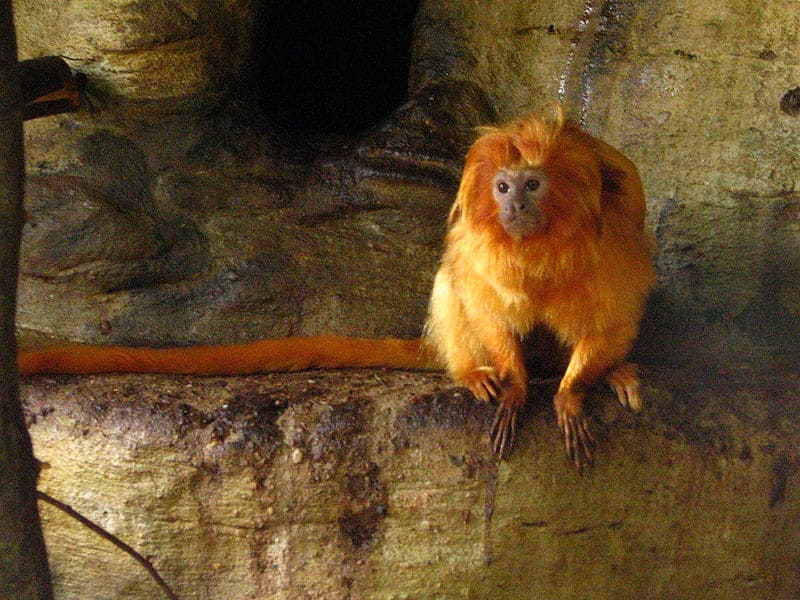
The tamarin’s paws resemble hands, but they have claws, also known as tegulae.
Like all New World monkeys, the golden lion tamarin has tegulae, which resemble claws, rather than the ungulae, or flat nails, present in all other primates, including humans. Tamarins can cling to the sides of tree trunks thanks to their tegulae. The tamarin’s paws resemble hands, but they have claws, also known as tegulae, as opposed to the flat fingernails, or ungulae, that humans and other primates have.
5. Golden Lion Tamarins Move Quadrupedally

The golden lion tamarin spends a maximum of 12 active hours a day.
©Edwin Butter/Shutterstock.com
Whether by running, bounding, jumping, or walking along the short branches. This gives it a gait that is more like that of a squirrel than a primate. A maximum of 12 hours a day are spent in active time for the golden lion tamarin.
6. They Move Their Nest Frequently

To avoid predators, Golden Lion Tamarins frequently switch up the fragrance they leave behind in their sleeping areas.
Tamarin groups employ dense vines, voids in trees, or epiphytes as places to sleep. It utilizes a different den every day to sleep in. To reduce the chance of being discovered by predators, groups frequently switch up the fragrance they leave behind in their sleeping areas.
7. The Golden Lion Tamarin is Omnivorous
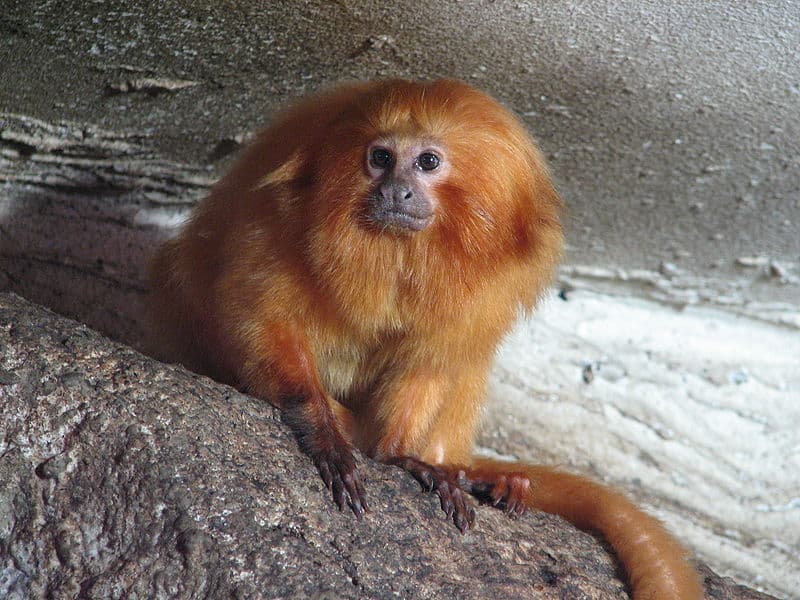
Golden Lion Tamarins hunt for their prey by probing into cracks in the bark, and other hiding spots with their long, slender fingers and hands.
©Mistvan – Public Domain
The omnivorous golden lion tamarin eats various foods, including fruits, insects, and tiny invertebrates. Any smaller animal could be eaten. They hunt for their prey by probing into cracks in the bark, bromeliads, and other hiding spots with their long, slender fingers and hands.
8. Golden Lion Tamarins are a Social Species

Golden Lion Tamarins are fiercely protective of their home range limits and resources.
©Eric Gevaert/Shutterstock.com
Although they are a social species, golden lion tamarins are very territorial. They typically consist of family members and are seen in groups of 2 to 8 in the wild. They are fiercely protective of their home range limits and resources, and groups will defend them against intruders.
9. Seeing Wild Golden Lion Tamarins is Very Rare
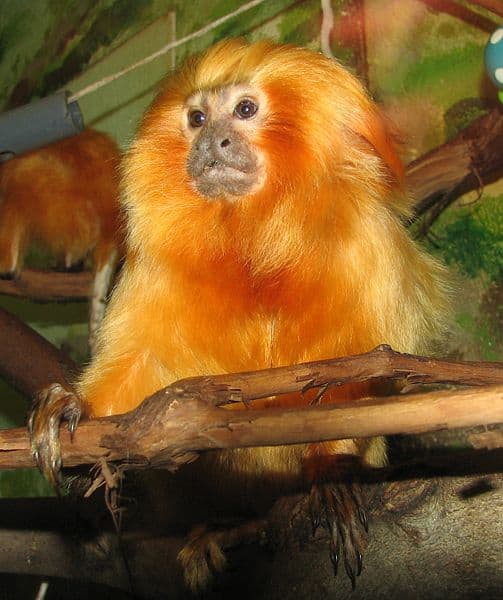
The destruction of the Golden Lion Tamarin’s forest habitat has been and continues to be the main cause of their decline.
One of the rarest wild mammals is the golden lion tamarin. One of Brazil’s most populous regions is the habitat of the golden lion tamarin. The destruction of the animal’s forest habitat has been and continues to be the main cause of their decline.
10. They Were Saved From Extinction

To stop members of the same family from mating, the Rio de Janeiro Primate Center has traded golden lion tamarins.
©Millie Bond – Copyright A-Z Animals
Golden lion tamarins were sometimes abducted and sold as pets by people. Many people’s desires for these exotic pets have been frustrated by their quick population fall. The IUCN declared the species endangered in 1982.
There is optimism because they have successfully reproduced in captivity, continuously increasing their population. To stop members of the same family from mating, the Rio de Janeiro Primate Center has traded golden lion tamarins. This aids in preserving the greatest genetic diversity in the animal’s captive populations.
Related Animals:
The photo featured at the top of this post is © iStock.com/jeancliclac
Sources
- National Geographic, Available here: https://www.nationalgeographic.com/animals/mammals/facts/golden-lion-tamarin
- Blue Planet Biomes, Available here: https://www.blueplanetbiomes.org/golden_lion_tamarin.php
- Wikipedia, Available here: https://en.wikipedia.org/wiki/Golden_lion_tamarin
Thank you for reading! Have some feedback for us? Contact the AZ Animals editorial team.




